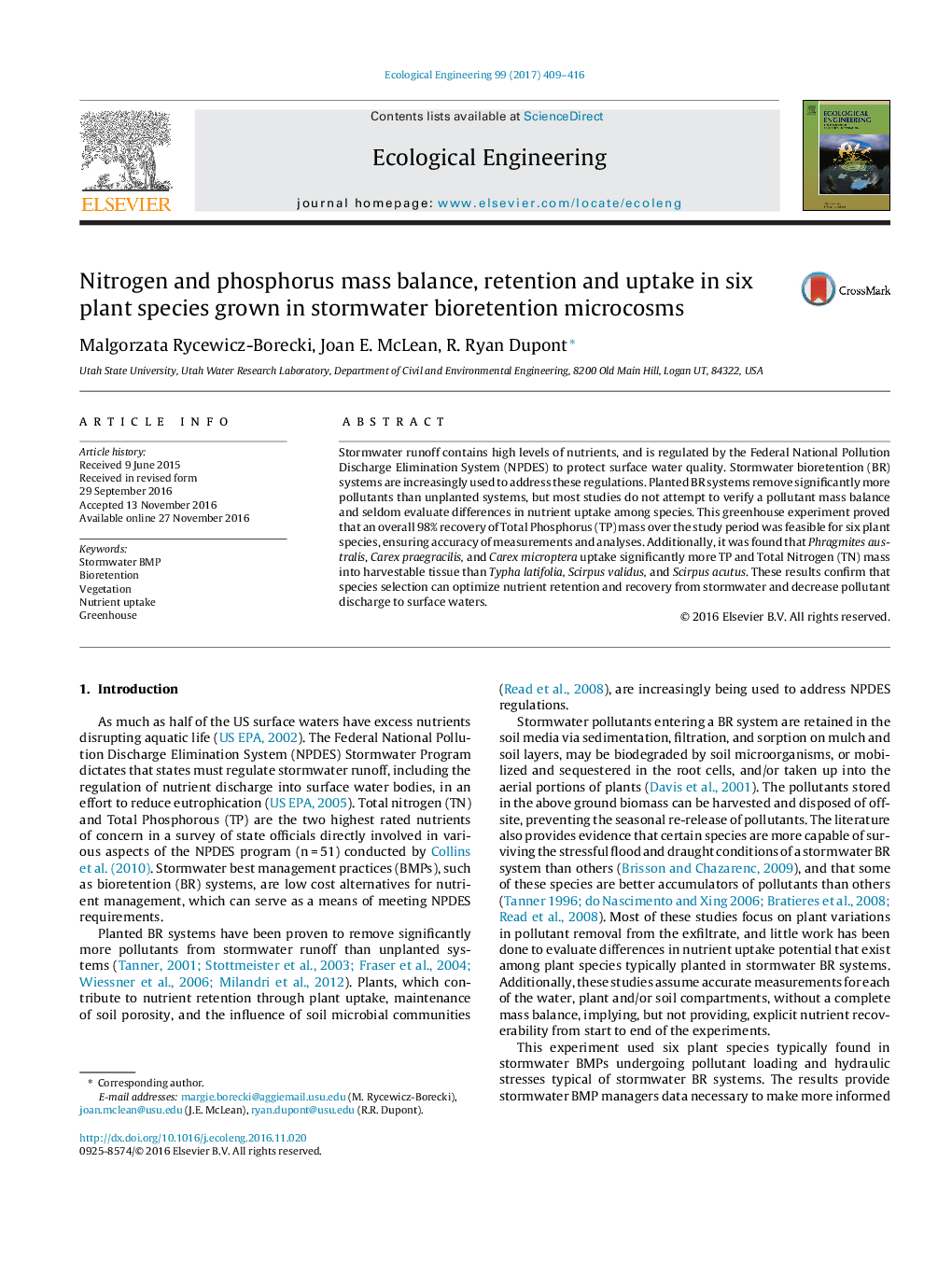| Article ID | Journal | Published Year | Pages | File Type |
|---|---|---|---|---|
| 5744010 | Ecological Engineering | 2017 | 8 Pages |
â¢98% recovery of TP mass provides confidence in uptake and removal efficiency results.â¢Planted systems can optimize TP and TN removal efficiency from stormwater runoff.â¢Phr, Cap and Cam yield higher uptake of TN and TP than Typ, Scv, or Sca.
Stormwater runoff contains high levels of nutrients, and is regulated by the Federal National Pollution Discharge Elimination System (NPDES) to protect surface water quality. Stormwater bioretention (BR) systems are increasingly used to address these regulations. Planted BR systems remove significantly more pollutants than unplanted systems, but most studies do not attempt to verify a pollutant mass balance and seldom evaluate differences in nutrient uptake among species. This greenhouse experiment proved that an overall 98% recovery of Total Phosphorus (TP) mass over the study period was feasible for six plant species, ensuring accuracy of measurements and analyses. Additionally, it was found that Phragmites australis, Carex praegracilis, and Carex microptera uptake significantly more TP and Total Nitrogen (TN) mass into harvestable tissue than Typha latifolia, Scirpus validus, and Scirpus acutus. These results confirm that species selection can optimize nutrient retention and recovery from stormwater and decrease pollutant discharge to surface waters.
